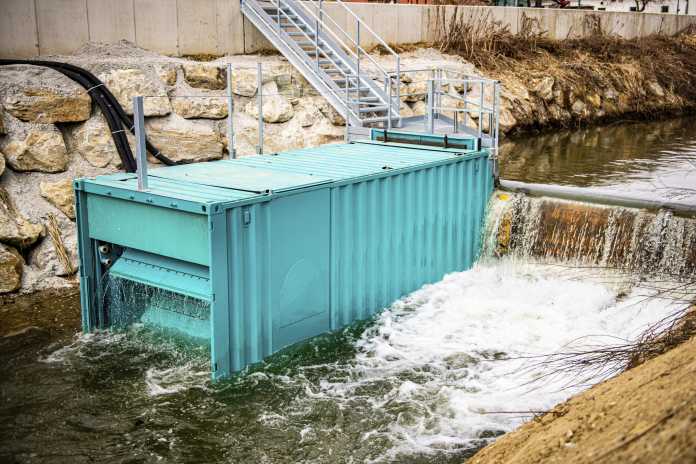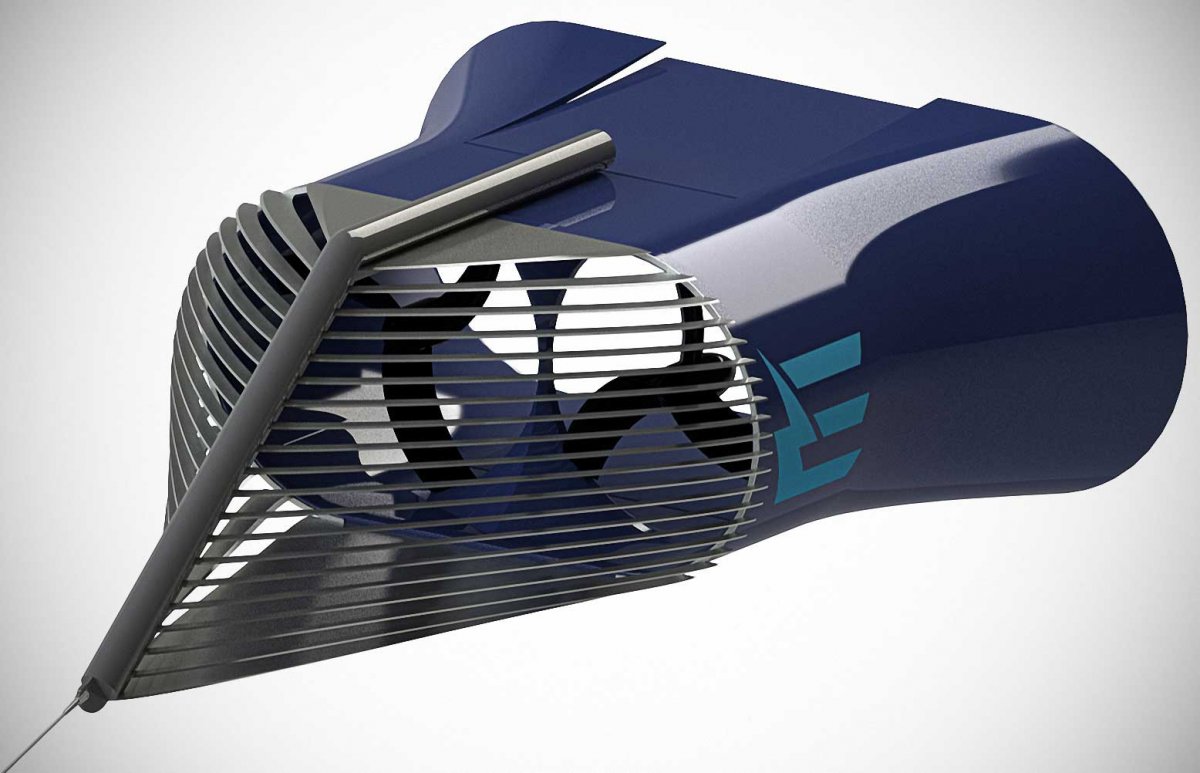A few new fish will be swimming in the Isar in a few weeks. Two meters thirty wide, three meters long, almost 90 kilograms in weight, anchored to the river bed – and in the future under special observation. These “energy fish” from the start-up Energyminer are intended to help test a new generation of hydroelectric power plants in practice, as reported by the magazine MIT Technology Review in its current issue 3/2023. Ecologically, founder Georg Walder does not expect any problems: “The systems fit inconspicuously into the picture of nature.”
Compared to Switzerland or Norway, where 60 or even 90 percent of the electricity produced comes from hydropower, the potential in Germany is limited – the gradient in the mountains is too low, and the waterways inland are overused. In Germany, hydropower accounts for a mere three to four percent of gross electricity consumption. Nevertheless: “Technically speaking, we could double hydropower in Germany without major difficulties, in principle even triple it,” says Christian Seidel, head of the research group at the Institute for Statics and Dynamics at the Technical University of Braunschweig.
Potential of hydropower in Germany
This can only be achieved with a mix of measures: First: build additional facilities – historically there are still some plans for the Rhine or the Main that have never been implemented. Second: reactivate old sites with new technology. Third: Modernization of existing power plants. Last year, for example, the energy supplier Verbund expanded and renewed the Jettenbach-Töging power plant on the Inn, which went on line in 1924. It now generates 25 percent more electricity.
It is not only climate change and the associated droughts that are slowing down hydropower – the approval processes in Germany are complicated and lengthy, because environmentalists and authorities are resisting. They are concerned that fish will die in the turbines. Or that watercourses become ponds because a dam slows down the current. Hydroelectric power plants turn “rivers into standing water. They change the entire ecosystem,” criticized BUND chairman Olaf Brandt last summer.
After lengthy negotiations, it was decided last year that smaller hydropower plants will also continue to be funded by the Renewable Energy Sources Act. But there is a lot of criticism of these smaller systems in particular. The Federal Agency for Nature Conservation considers larger systems to be quite useful. With less than one megawatt, however, “high ecological losses” can be expected in comparison to the energetic yield.
There is no life without water – but too much can be just as deadly as too little. That’s why the new issue of MIT Technology Review sheds light on how we use the element. Highlights from the magazine:
Generating hydroelectric power in a fish-friendly way
There are certainly possibilities to build river power plants in a fish-friendly way. Here is an overview of current projects:
- Energyfish advertises that no additional dams are needed. One of the turbines, camouflaged as tree trunks and drifting just below the surface of the water, has an output of six kilowatts. That would be enough for three households. But there are already inquiries for a location with up to 160 systems, reports Walder. “That’s almost a megawatt, enough for entire towns.” Close-meshed grids in front of the water inlet are intended to protect fish.
- In the Rhine near St. Goar, a local initiative has already got the first floating current buoys floating. Here, too, rakes should prevent fish from being harmed.
- Doro Turbinen from Graz has developed a small hydroelectric power station that can be placed in rivers in a standard container, with an output of 35 KW. Large shovel chambers and a low turning speed should allow fish to pass unhindered, at least downstream.

The Doro small power station, which is installed in a standard container, dips its turbine blades into the water to optimize the flow. As a result, it should achieve a high level of efficiency.
(Image: Doro Turbinen GmbH)
- At TH Köln, researchers are working on the Rheinsharing project. They rely on the shape of a diabolo for their turbine, with a narrowed middle point, in order to achieve the highest possible flow rate. In the coming months, a test turbine, almost three meters long, will be installed under a research ship anchored on the banks of the Rhine. A steel cage is designed to keep fish away from the opening. At some point, a system about seven meters long with a diameter of about three and a half meters should deliver 35 kilowatts in the “strong-current edge areas” of rivers.
- The Bannetze research power plant in the Aller is scheduled to go into operation in 2025. It has enormous proportions: eleven meters long, twelve meters wide, and a total of 60 blades. The test facility in Lüneburg Heath aims to solve a physical dilemma: Conventional turbines built into dams need a head of at least two meters to work efficiently. Water wheels, on the other hand, can only process a small amount of water. “We need water wheels with the absorption capacity of a turbine,” says Seidel.

In 2025, a research power plant with a gigantic paddle wheel is to go into operation on this Aller weir at the Bannetze lock, which is intended to make hydropower efficient even with low heads.
(Image: Federal Institute for Hydraulic Engineering)
- The trick: Instead of maximum performance, it is trimmed to work as steadily as possible. The individual chambers fill up and are pulled down by gravity at only 1 to 4 revolutions per minute. With a drop of just 1.6 meters, it is expected to generate up to 2.5 million kilowatt hours of electricity per year. Pike, perch or carp could be transported up or down the wheel without injury, says Seidel: “It’s like a paternoster for the fish.”
Read MIT Technology Review here:
(hrm)
